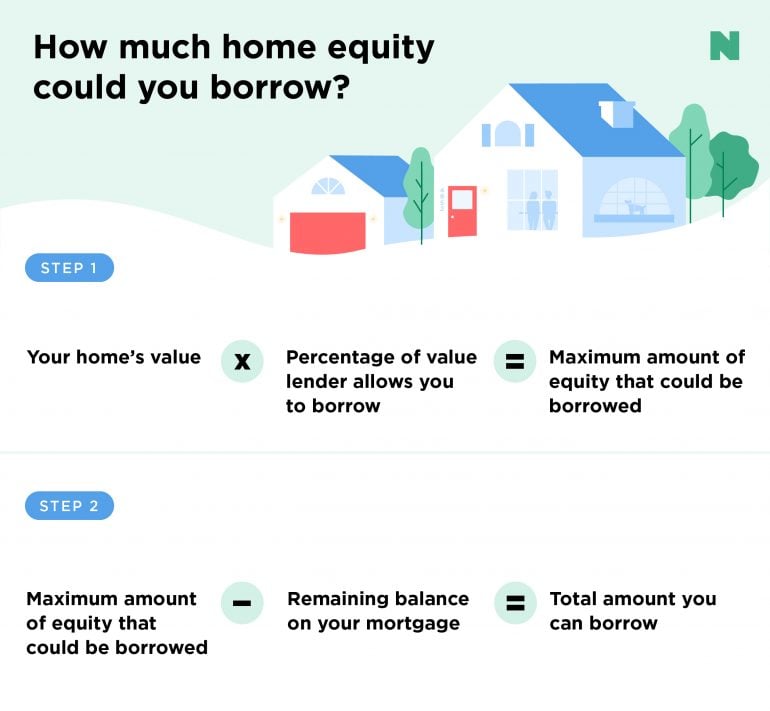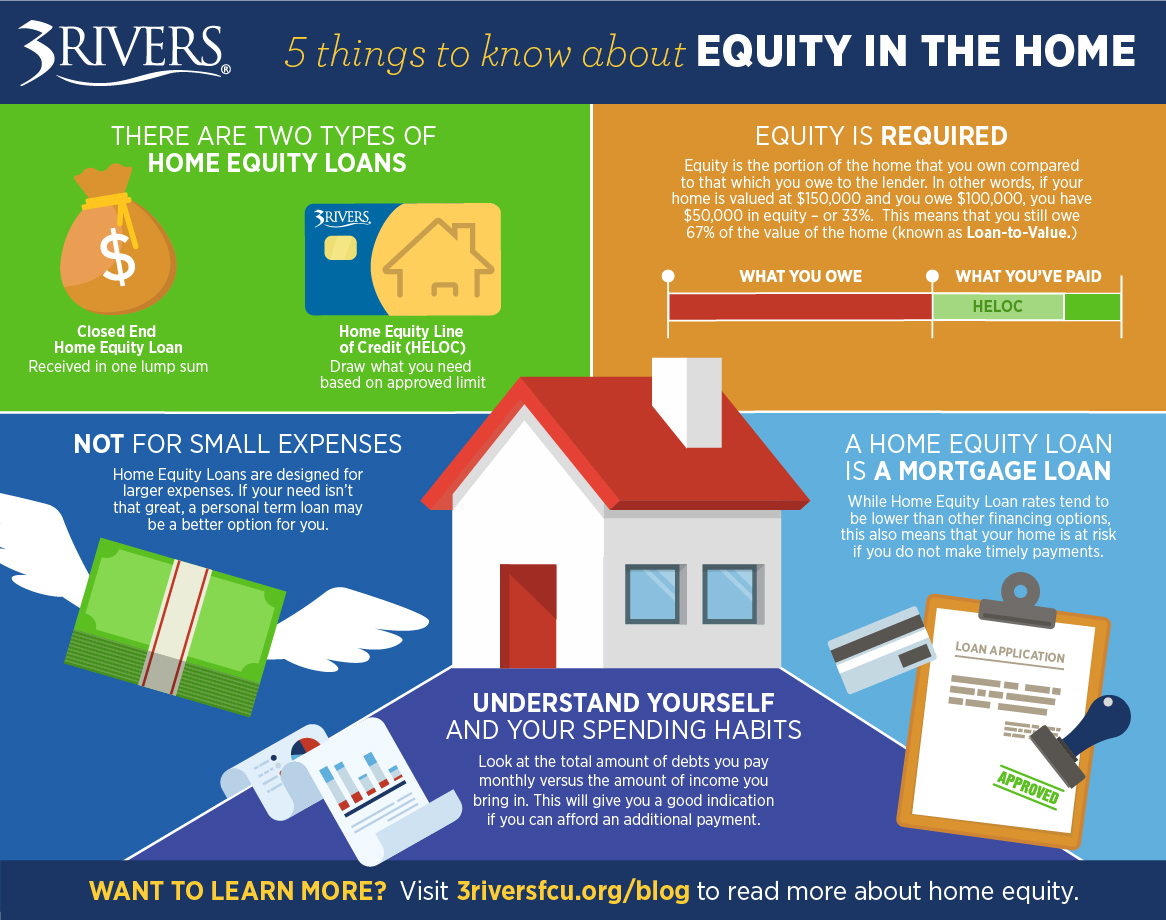Leading Equity Loans for House Owners: Get the Best Rates
Leading Equity Loans for House Owners: Get the Best Rates
Blog Article
Demystifying the Qualification Process for an Equity Finance Authorization
Navigating the credentials process for an equity financing approval can commonly seem like understanding a complex challenge, with numerous factors at play that establish one's qualification. Understanding the interaction in between debt-to-income ratios, loan-to-value proportions, and various other essential standards is critical in safeguarding approval for an equity loan.
Secret Qualification Criteria
To certify for an equity financing authorization, conference certain key eligibility requirements is necessary. Lenders commonly call for applicants to have a minimum credit rating, typically in the array of 620 to 700, depending on the institution. A strong credit rating, showing a responsible repayment performance history, is also important. Furthermore, loan providers examine the candidate's debt-to-income proportion, with most choosing a proportion listed below 43%. This shows the borrower's ability to handle extra financial obligation sensibly.
Furthermore, loan providers assess the loan-to-value ratio, which contrasts the quantity of the car loan to the appraised worth of the home. Normally, loan providers prefer a reduced proportion, such as 80% or much less, to alleviate their danger. Work and revenue security are key consider the approval procedure, with lenders seeking assurance that the borrower has a dependable resource of earnings to settle the finance. Satisfying these vital eligibility standards enhances the likelihood of protecting approval for an equity finance.
Credit Report Significance

Credit history usually vary from 300 to 850, with greater ratings being much more desirable. Lenders typically have minimal credit history demands for equity car loans, with ratings over 700 normally taken into consideration good. It's essential for candidates to review their credit score reports regularly, looking for any kind of errors that might adversely impact their ratings. By preserving a good credit rating through timely expense payments, low credit report utilization, and accountable borrowing, candidates can boost their possibilities of equity funding approval at affordable prices. Understanding the significance of credit history and taking actions to enhance them can significantly impact a borrower's financial possibilities.

Debt-to-Income Ratio Analysis
Provided the essential function of credit history in identifying equity lending approval, an additional essential aspect that lenders analyze is an applicant's debt-to-income proportion evaluation. The debt-to-income proportion is an essential financial statistics that gives insight into an individual's capacity to take care of additional financial debt responsibly. Lenders compute this ratio by splitting the overall regular monthly debt commitments of an applicant by their gross month-to-month earnings. A reduced debt-to-income ratio suggests that a borrower has even more income readily available to cover their debt settlements, making them a much more attractive candidate for an equity financing.
Lenders usually have details debt-to-income ratio demands that customers must satisfy to receive an equity lending. While these needs can vary among lenders, a typical standard is a debt-to-income proportion of 43% or lower. Borrowers with a higher debt-to-income proportion might deal with difficulties in safeguarding authorization for an equity car loan, as it suggests a higher risk of back-pedaling the finance. Equity Loans. It is important for applicants to evaluate and potentially decrease their debt-to-income ratio prior to applying for an equity loan to enhance their opportunities of approval.
Residential Or Commercial Property Assessment Demands
Assessing the value of the building through a detailed appraisal is an essential action in the equity loan approval procedure. Lenders call for a residential or commercial property assessment to make certain that the home gives sufficient security for the finance quantity requested by the debtor. Throughout the property evaluation, a certified appraiser examines various variables such as the building's problem, size, area, equivalent residential or commercial property values in the location, and any type of unique features that might affect its overall worth.
The building's assessment worth plays an important role in Get More Information determining the optimum amount of equity that can be obtained versus the home. Lenders normally require that the assessed value fulfills or surpasses a specific percentage of the lending amount, referred to as the loan-to-value proportion. This proportion aids alleviate the lending institution's threat by making sure that the building holds adequate value to cover the loan in situation of default.
Ultimately, a detailed residential or commercial property evaluation is essential for both the customer and the lending institution to accurately analyze the residential or commercial property's worth and figure out the usefulness of approving an equity finance. - Equity Loan
Comprehending Loan-to-Value Ratio
The loan-to-value ratio is an essential economic statistics made use of by loan providers to analyze the threat related to supplying an equity car loan based upon the residential or commercial property's evaluated worth. This proportion is computed by splitting the quantity of the loan by the assessed value of the building. If a building is appraised at $200,000 and the car loan quantity is $150,000, the loan-to-value ratio would be 75% ($ 150,000/$ 200,000)
Lenders make use of the loan-to-value ratio to establish the degree of threat they are handling by giving a car loan. A greater loan-to-value proportion indicates a higher risk for the lending institution, as the debtor has less equity in the building. Lenders typically prefer reduced loan-to-value proportions, as they offer a padding in case the customer defaults on the residential property and the car loan requires to be sold to recover the funds.
Borrowers can likewise gain from a lower loan-to-value proportion, as it might cause better loan terms, such as reduced passion prices or minimized fees (Alpine Credits). Understanding the loan-to-value ratio is critical for both lending institutions and borrowers in the equity financing approval procedure
Conclusion
In final thought, the certification process for an equity lending approval is based on key qualification requirements, credit report rating importance, debt-to-income ratio evaluation, residential property evaluation demands, and recognizing loan-to-value proportion. Comprehending these elements can help people navigate the equity financing authorization process much more efficiently.
Understanding the interplay between debt-to-income proportions, loan-to-value ratios, and various other essential standards is vital in securing authorization for an equity funding.Given the crucial function of debt ratings in determining equity loan authorization, another essential element that lenders assess is an applicant's debt-to-income proportion analysis - Alpine Credits Equity Loans. Customers with a higher debt-to-income ratio might face obstacles in protecting approval for an equity loan, as it recommends a greater risk of failing on the financing. It is important for applicants to analyze and potentially reduce their debt-to-income proportion before using for an equity finance to raise their chances of approval
In conclusion, the certification process for an equity lending approval is based on crucial eligibility requirements, credit report score value, debt-to-income proportion analysis, residential property assessment needs, and comprehending loan-to-value ratio.
Report this page